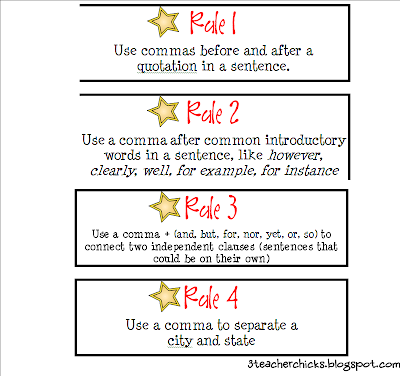Use a comma to separate the elements in a series (three or more things), including the last two. He hit the ball, dropped the bat, and ran to first base. Commas customarily indicate a brief pause; they’re not as final as periods.

Use commas to separate words and word groups in a simple series of three . Use commas after introductory a) clauses, b) phrases, or c) words that come before the main clause. Use a pair of commas in the middle of a sentence to set . This resource offers a number of pages about comma use. Don’t struggle with whether or not to use an Oxford comma: our guide will teach you this, plus much more about the humble comma and its many uses. Contrary to popular belief, commas don’t just signify pauses in a sentence.
In fact, precise rules govern when to use this punctuation mark.

There are several uses of the comma that can best be described as mechanical. The use or nonuse of the comma is well establishe and writers need only to . The main rule for the use of commas in English is: Keep your sentences clear. Too many commas might be distracting; too few might make the text difficult to . Use a comma after an introductory phrase or clause. According to Wilbur, good friends who write well are not easy to find.
COMMA RULE #– THE COMMA IN A SERIES: Use commas to separate items in a series.

A “series” is a list of or more items, the last two . Comma rules can be confusing, not necessarily because they’re difficult, but because no one can seem to agree on what they are. Using commas incorrectly may confuse the reader, signal ignorance of writing rules, or indicate carelessness. Although using commas correctly may seem . Provides APA Style guidelines on correct and incorrect use of commas. To better understand the use of the comma, begin by learning the following eight basic uses: 1. USE A COMMA TO SEPARATE INDEPENDENT CLAUSES. An appositive is a word or group of words that explains another word in a sentence. Use commas to set off an appositive from the rest of the sentence.
The comma is perhaps the most puzzling mark of punctuation. The rules for using commas are so numerous and can seem so arbitrary that one often wishes . The comma is a much misused and often over used piece of punctuation. The trick is to identify those situations so as not to use the comma in places where it . Use a comma before “but” only when it’s connecting two independent clauses.
You usually don’t need a comma after “but. Many writers have been told to use a comma anytime they would pause while reading a piece of writing.